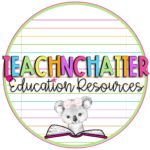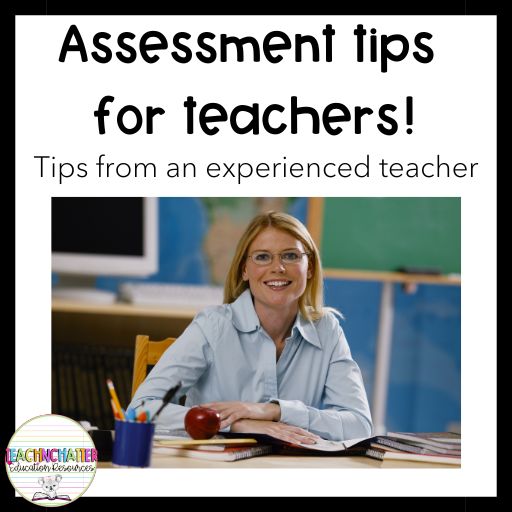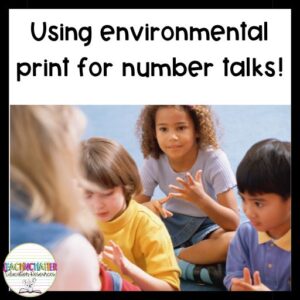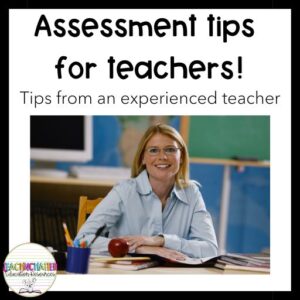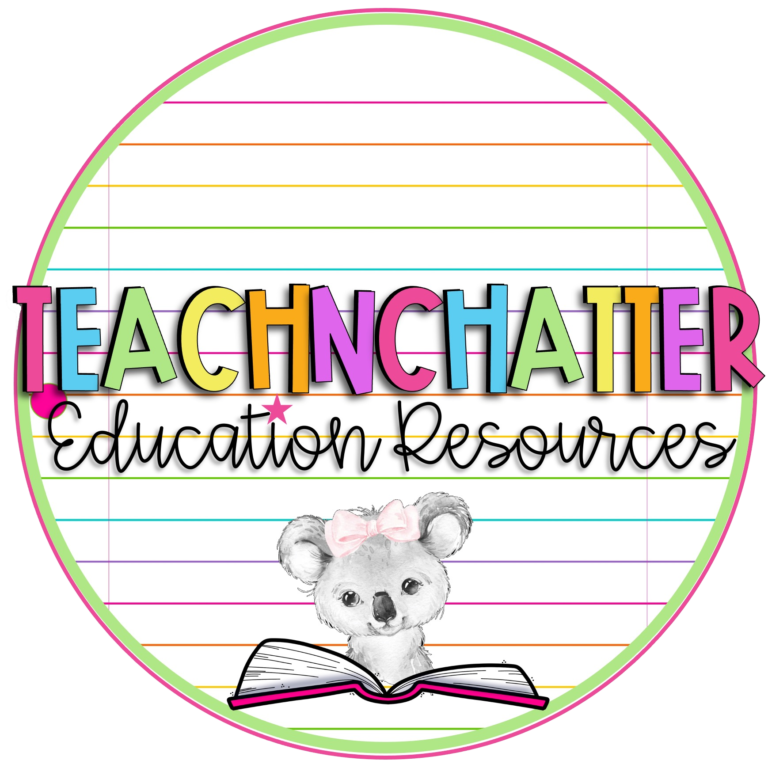Assessment tips for teachers
There seem to be more teachers that loathe report writing and assessment procedures than those that jump for joy at the mere mention of this yearly process. Which camp are you in? I think I am in the camp of dread but I get it done and have got it done for twenty years. I’ve never been late in handing the required documents in on time. So, here’s some assessment tips that may assist you. I have trialled many different strategies over the years and am always open to trying new and improved methods!
In Western Australia, our formal reports to parents are sent out twice a year (one for each semester of the year of which we have two semesters in one year). So, you may think that it is as simple as sitting down two days of the year, writing the reports, handing them in to admin and walking away? I’m sorry to disappoint you, but it’s not quite that easy. It doesn’t have to be awful either. Here’s some background knowledge that may help you understand assessment better before you plunge into your tests and processes. Keep reading…
Background knowledge
First, let me set the scene for some background knowledge into what constitutes an assessment. There are two main categories of assessments, formative and summative. Diagnostic tests can become a category of their own when used in clinical practices (e.g. by speech therapists, psychologists and other allied health professionals) when the assessments do not inform teacher planning but assist in diagnosing a developmental/learning disorder.
Formative assessments are conducted by teachers to monitor students learning, provide feedback and are ongoing (throughout the year). Some diagnostic tests can be considered formative, if they are used to inform teacher planning (e.g. just think of an alphabet knowledge test).
Summative tests evaluate the students learning at the end of a unit. They will let the teacher know (and the child/parents) of how much information the child has gained in the unit (or how they skills have improved). Summative tests can be used to compare students learning to benchmarks if they are available. Some summative tests can be standardised as well.
Let’s begin with they WHY! Why do we spend so much time on assessments? Well, the reason we assess students is because we want to know what they know and what they do not know. We also want to know how they learn, the problem solving processes that students use and the time it usually takes for them to learn new material. We also want to know if students are achieving the expected outcomes for their year level.
Other questions to consider during formative and summative assessing include; are the students learning the content in this lesson, have they learnt this large unit that I have taught them, how do they learn (e.g. do they require a lot of hands on experiences, revision, explicit lessons), how do they compare to other students in the same year, are they achieving a satisfactory (or above or below) the grade level that they are in.
There is a broad assessment cycle that includes; assess, plan and teach. Some experts like to add in other components such as; review and so forth, but keep in your head this basic format (assess, plan and teach) and you’ll be good to go!
Formative Assessments
When should you use formative assessment types? I try my best to use formative assessments in every lesson I teach. Don’t worry, you actually do this too, it’s just that you will be keeping a lot of your “formative” assessments in your head and not written down. It’s also a lot more simple than you may think.
You can do this by keeping work samples (as in, their writing books, scrap books, taking photographs of their “working out” of a math sum and so on). The downside of this is that when you want to write a report, that’s a heck of a lot of sorting through to get the information that you want, but you will have it there nonetheless. The other strategy to consider is to have a checklist. I often do this when the students are completing work at their desks. After I have taught a lesson, I will move around the classroom and check on how the students are going with their independent task. You can write a simple lesson outcome at the top of your class checklist, tick when you see the outcome achieved on their paper work or ask questions as you reach each student. Then, at the end of the unit (when I am writing reports), I can easily flick through these checklists (that are dated) to see how the student has gone in the unit. Did they achieve the outcomes during each lesson or was it only at the end of the unit that they understood most concepts?
Diagnostic tests, such as phonic knowledge or spelling tests, can become formative when they are used to inform your teaching unit. I will often do this at the beginning of each term (we have ten week terms in Western Australia). If I discover that all of my students are missing consonant digraphs in their spelling tests (e.g. ch, sh, th) then I will focus on these phonemes in my teaching unit, rather than moving on to vowel digraphs. I can also use this knowledge to set goals for the students. John Hattie’s research indicates that the effect size of setting goals is good (e.g. it is 0.56 and anything over the threshold of 0.40 is considered effective).
Another idea that I regularly practice is to write the same lesson objective (or even a different objective so that you can gain more varied data) at the top of my checklist and ask questions during the actual lesson. If this is going to be too challenging, choose five students only to focus on per lesson. Ask them questions and checklist their responses. You can do this during your daily warm-up, the explicit lesson or even an informal discussion time.
You can use formative assessments during “messy” play activities, or even in the “we do” part of the lesson as well. It is as simple as watching the child solve a problem, ask them to explain how they solved it, how they knew it and checklist their response. How often have you discovered that the child may have got the answer correct but doesn’t really know how they got it correct and cannot always solve problems because they don’t really understand the ways to solve a problem?
During small group reading sessions, I often ask the student to stop reading for a minute and explain a word to me. Doing this every now and then helps me understand whether they understand the vocabulary used in the book. I take a quick note of the word and just tick or cross whether they understand the word (or can give an example or definition). I find taking the occasional timed fluency rate during reading to be helpful and I also make small notes on how they are decoding words. All of these “little” notes as the child is doing the action are formative assessments! You are probably doing these things already. Keep them as when you write your reports, just flick back through them and you can make observations (such as; Johnny frequently sounds out unknown words but needs reminders to blend the sounds to say it as a whole word).
When you are going around your class, or sitting at the small group table, and you are asking questions of your students, provide them with some simple but direct feedback. After listening to a student reading, I may make a comment such as, “I like the way you said the sounds in that word and put them together. You are not guessing the word anymore. Sounding out is helping you to become a more accurate reader!” John Hattie’s effect size for effective (clear and direct) feedback is 0.73. Providing feedback is also listed as one of the High Impact Teaching Strategies developed by the Victorian Education Department (link below) that is based on the research from Robert Marzano and John Hattie.
I have not written much about anecdotal record keeping and this can be considered a formative assessment in the early years. Some play experiences would be worthy of taking notes in this way. Keeping anecdotal notes and gleaning information from them are highly beneficial but also very time consuming in a junior primary. I have used these in the past when I have wanted to take note of a student’s pragmatic skills (e.g. social skills). When you take note of everything that student says (and to whom), it can be beneficial but not always necessary for a whole class. If you have concerns that a student has a learning disability or additional need, then taking anecdotal records would be wonderful. You will probably have to ask a colleague to watch your class while you do this though as you cannot be writing detailed notes while students come up to ask questions.
Summative Assessments
Ok, so let’s move on to summative assessments. These seem to be everyone’s favourite and they are certainly easier in some respects (unless you have to mark and plot a four page assessment for each student!). I love summative assessments too… until I have to mark them all. What do I love? I love the simplicity of it… hand the paper out (or sit with a child 1-1 and ask the questions), mark it and reflect on the progress (or lack of). Anyway, a summative assessment can be very helpful if it accurately provides information on what your unit has been about and links to comparisons of grade level (or other) standards. I will look back at the curriculum outcomes that I am teaching (and the judging standards available here in W.A. on the SCASA website) and note the key content that I need to assess.
I then usually write my own assessment that is going to cover that specific content. It is helpful if you get your colleagues to look at the assessment that you have created to see if they agree with your interpretation. Even better… if you are in the same year level, do the same assessment so that you can moderate your report grades together. Sometimes, it may be more helpful (and time friendly) to bring along the assessments that you are unsure about. In your moderation meeting you may wish to look at A, B or D grade samples together. You can discuss WHY you think each is worthy of that grade and come up with a reason to satisfy each grade (we do not grade as an A, B, C, D here in W.A. but rather have a broad statement to match each grade such as; Satisfactory).
Just remember, if you are writing your own summative assessment, try to keep your assessment brief. You have to mark it. Remember that. Do you really need a ten page assessment? I am an early childhood teacher so, I know it is not appropriate to provide such a test and if you are a high school teacher then you may find that this is indeed appropriate. Take a moment to reflect and think… does this question really provide me with the information I need to know? This thinking is also appropriate when you select an assessment written commercially or elsewhere. I have seen many commercial assessments and been confused as to what the outcome actually is! Be critical of what you read before you give it to your students.
Assessment Tips in a nutshell:
So here are my tips in a nutshell:
- checklists are your friend – just write the brief outcome on top and use them in every lesson – checklists accumulate and can give you an ongoing picture
- summative assessments are great – just focus on the outcomes and keep them brief
- ask questions when students are providing answers
- take photos of constructions, play experiences and other experiences that will help provide evidence of achieving (or not) outcomes
- keep it simple – you may wish to try implementing one checklist per week and one summative assessment for each subject at the end of each term
- make sure you know how to conduct any summative assessments prior to doing so with your students. Ask a colleague or watch a colleague conducting the test themselves if you are unsure!
- have ALL of the assessment materials ready – set out – and at your reach when doing the assessment
Tips for early childhood teachers:
- Depending on your students, you may wish to call your summative test a “challenge.” This is your choice and I have done both. I think students need to learn that there are words that describe activities and tasks at school, teachers are happy when students try their best, there will be times when students are asked to complete assessments and tasks are all ok! However, if you have a high percentage of anxious or behaviourally challenged students, you may wish to call the test a challenge to ease the stress.
- Do not call students to do testing (for one-to-one testing) when other students are engaging in play because the students will often rush and not perform. Trust me, I’ve done it and learnt the hard way! Again, this is your choice. I would build the test into a learning based rotation during your activity times.
- If you are calling on students for 1-1 testing, do not ask the students to engage in a new task that they do not really know how to do and expect them not to bother you. Again, I have done this in my early years of teaching too. It’s frustrating and not worth it at all. Make sure your students are engaging in a task that they LIKE and CAN DO.
- Try to sit away from other students and in a quiet area so that the student can concentrate (if the test is a 1-1 activity)
Additional random helpful tips for test days:
1 – You may need to encourage your class to engage in a movement activity prior to sitting down and completing a summative task where they are expected to concentrate. I use the website ‘GoNoodle’ for this kind of movement break. It’s free. If you have older students, they may wish to run around the oval, walk to the water fountain and so forth.
2 – Some students may require a fidget toy to help them focus. Just make sure it is a tried and tested toy and nothing new and novel that will distract their attention!
3 – Crunch & sip snacks at student desks may be beneficial for some classes.
4 – Encourage your class to go to the toilet BEFORE they begin the summative test.
5 – Remain calm yourself. Try not to get to “hyped up.” Just treat the test day like any other day.
6 – Have a reward at the end of the test. It does not need to be a grand adventure. I don’t think we need to “bribe” students into engaging in a test for the reward but every class is different and honestly, you have no judgement by me. Just do what works for you and your class. Why not have fun if it helps?! Maybe the reward could be worded in a way that “rewards” the students for their focused attention!
Where to now?
So you’ve done all of this testing, now what? Now it is time for you to reflect on your teaching, your students strengths and weaknesses and what your next action steps will be. Use your assessments to inform your report writing, parent meetings, goal setting with your students and planning for the next term. Not much to do…!
Every now and then, critique the assessments you are using. I have a habit of over assessing. But really think hard as your time is valuable. Look over the test and decide what it actually assesses, whether it will inform your planning and ability to report on your students and how difficult it is to administer and mark. All of these points matter. If you do not have time to spend marking tests that will take hours to analyse, do not choose this test (unless of course you are required to by your school!).
I hope this has been helpful for you. I like to make up Student Portfolio booklets that include most of the summative (and some diagnostic tests) tests taken throughout the year. This MASSIVELY helps me when I go to write my reports because I have a simple display book to flip through and reflect on. If you’d like to know more about this, let me know and I can write an article about this process!
Take care. You can do it!
Kind regards,
Jennifer
